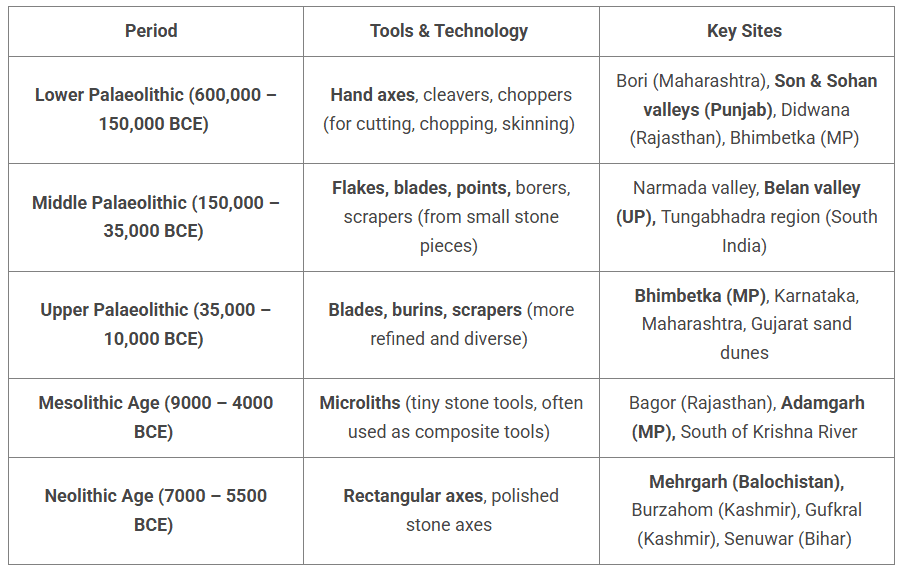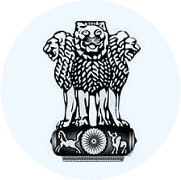History, Art and Culture: March 2025 UPSC Current Affairs | History for UPSC CSE PDF Download
| Table of contents |

|
| Amir Khusrau and Sufism |

|
| Ancient Stone and Bone Tools |

|
| Govind Ballabh Pant |

|
| Morarji Desai |

|
Amir Khusrau and Sufism
 Why in News?
Why in News?
The Prime Minister praised Amir Khusrau, highlighting him as a symbol of India’s pluralistic heritage.
Key Takeaways
- Amir Khusrau was a 13th-century Sufi poet and musician.
- He was known as Tuti-yi-Hind, meaning ‘Parrot of India’.
- His contributions greatly influenced Indian classical music and literature.
Additional Details
- Who is Amir Khusrau: Born as Abu'l Hasan Yamin ud-Din Khusrau in Patiali, Uttar Pradesh, he made lasting contributions to Sufi qawwali and Persian literature.
- Literary Contributions: His works include Divans (poetry collections), Mathnawis (narrative poetry), and treatises that blended Persian, Arabic, and Indian traditions.
- Musical Influence: He created new ragas and developed musical forms such as Khayal and Tarana.
- Role in the Delhi Sultanate: He served under five Sultans and was honored for his literary excellence.
- Sufi Influence: As a disciple of Nizamuddin Auliya, his poetry and music were deeply inspired by Sufi teachings.
What is Sufism?
Sufism is the mystical and spiritual dimension of Islam that focuses on inner purification, love, and a direct connection with God (Allah). It emerged in the 9th and 10th centuries CE as a response to the rigidity of institutionalized religion.
Core Practices of Sufism
- Sufis organized themselves into communities around khanqahs (hospices), led by a master (shaikh or pir).
- They established silsilas (Orders of Sufi) that linked disciples to Sufi tombs (dargahs), which became pilgrimage sites.
- Practices include self-mortification, zikr (remembrance of God), sama (musical recitals), and Fana-o-Baqa (dissolution of self for union with God).
Sufism in India
- Al-Hujwiri was one of the earliest prominent Sufis in India, and his work Kashf-ul Mahjub is significant.
- By the 12th century, Sufis were organized into various orders or Silsilas, including the Chishti, Suhrawardi, and Naqshbandi Orders.
Impact of Sufism
- Religious: Emphasized personal devotion and equality, fostering Hindu-Muslim coexistence.
- Social: Attracted marginalized groups and weakened caste hierarchies.
- Cultural: Influenced Indian music and enriched vernacular literature.
- Political: Inspired policies of religious tolerance, particularly under Akbar.
Amir Khusrau’s contributions to literature, music, and Sufism reflect India’s pluralistic and syncretic traditions. His works bridged Persian and Indian cultures, while Sufism, alongside the Bhakti movement, played a crucial role in shaping India’s composite cultural and religious ethos.
Ancient Stone and Bone Tools

Why in News?
A recent study has revealed that ancient ancestors utilized bone tools as far back as 1.5 million years ago, challenging the previous belief that such toolmaking was exclusive to humans. This finding significantly alters our understanding of early hominin behavior and cognitive abilities.
Key Takeaways
- The earliest stone tools date back to 3.3 million years
- Bone tools demonstrate that tool use predates the Homo genus
- Toolmaking indicates the presence of conceptual thought in early hominins
- Lucy, a notable fossil discovered in 1974, lived 3.2 million years ago and is believed to have used her hands for tool-making
Additional Details
- Origin of Toolmaking: The discovery of stone (3.3 million years) and bone tools (1.5 million years) shows that tool use was likely practiced by earlier hominins, not just humans.
- Fossils of Human Evolution: Lucy's fossil, a key find in understanding human evolution, suggests that early ancestors were capable of creating and using tools.
Stone Tools in India’s Human History
 This research not only enhances our understanding of the timeline of tool use in human evolution but also emphasizes the cognitive capabilities of early hominins, suggesting that the ability to create tools may have been a pivotal development in the history of human-like species.
This research not only enhances our understanding of the timeline of tool use in human evolution but also emphasizes the cognitive capabilities of early hominins, suggesting that the ability to create tools may have been a pivotal development in the history of human-like species.
Govind Ballabh Pant

Why in News?
The Chief Minister of Uttar Pradesh paid homage to Govind Ballabh Pant (1887-1961) on his death anniversary, observed on March 7. Pant is celebrated as a prominent freedom fighter and served as the Chief Minister of Uttar Pradesh.
Key Takeaways
- Govind Ballabh Pant was born in Almora, Uttarakhand, and was influenced by notable leaders such as Gopal Krishna Gokhale and Madan Mohan Malaviya.
- He played a crucial role in various movements, including the Salt March (1930), the Civil Disobedience Movement (1930), and the Quit India Movement (1942).
- Pant contributed to the Indian Constitution as a member of the Constituent Assembly.
- As Chief Minister of Uttar Pradesh, he focused on the abolition of Zamindari and modernization initiatives.
- In 1955, he was appointed Union Home Minister by Jawaharlal Nehru, where he significantly advocated for Hindi as an official language of India.
- He was honored with the Bharat Ratna in 1957 for his contributions and legacy.
Additional Details
- Early Life: Pant's formative years were marked by the inspiration drawn from notable educational reformers, which shaped his future endeavors in politics and social reform.
- Political Influence: His legacy includes mentoring prominent leaders such as Chaudhary Charan Singh, highlighting his impact on future generations of politicians in Uttar Pradesh.
Govind Ballabh Pant's contributions to India's freedom struggle and his subsequent political achievements underscore his role as a significant figure in Indian history. His efforts not only advanced the cause of independence but also laid the groundwork for modern governance in Uttar Pradesh.
Morarji Desai

Why in News?
Lok Sabha Speaker recently paid tributes to Morarji Desai, the former Prime Minister of India, on his 129th birth anniversary, highlighting his significant contributions to the nation.
Key Takeaways
Morarji Desai was born in February 1896.
- He served as the 4th Prime Minister of India from 1977 to 1979.
- He played a crucial role in India's freedom struggle.
- Desai was instrumental in various post-independence reforms and policies.
Additional Details
- Role in Freedom Struggle: Desai resigned as a Deputy Collector in 1930 after 12 years in British service to join India’s independence movement. He faced detention during the Individual Satyagraha in 1941 and was arrested during the Quit India Movement in 1942.
- Post Independence Career: He became the Minister of Commerce and Industry in 1956 and took over the Finance portfolio in 1958. He resigned from the Union Cabinet under the Kamaraj Plan in 1963, which encouraged senior Congress leaders to resign voluntarily to bolster grassroots efforts.
- Desai was appointed Chairman of the 1st Administrative Reforms Commission in 1966, where he aimed to restructure government administration.
- He led the Janata Party to a monumental victory in the 1977 Lok Sabha elections and served as Prime Minister. During his tenure, the 44th Amendment Act was enacted in 1978 to reinforce the rule of law.
Morarji Desai's legacy continues to influence Indian politics and governance, reflecting his dedication to public service and democratic principles.
|
216 videos|855 docs|219 tests
|




















